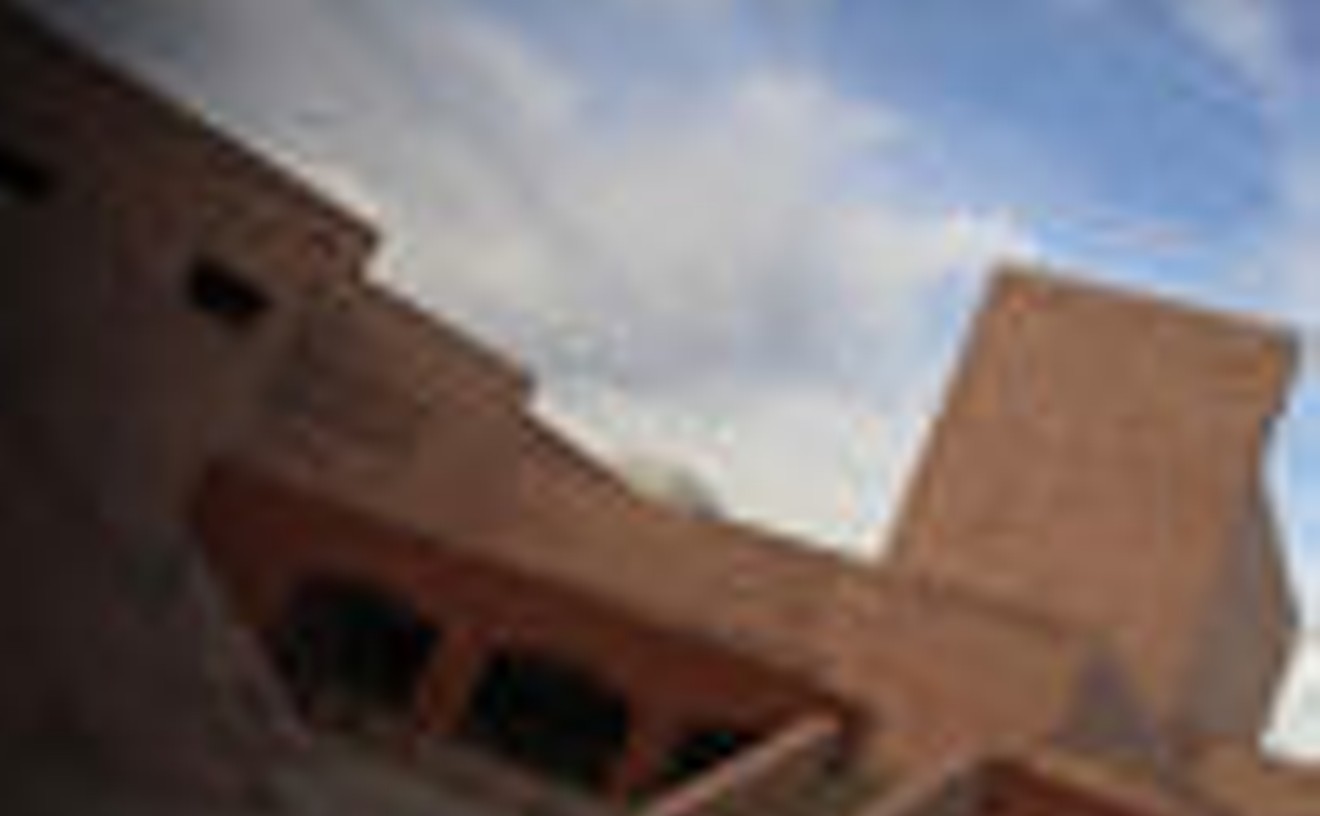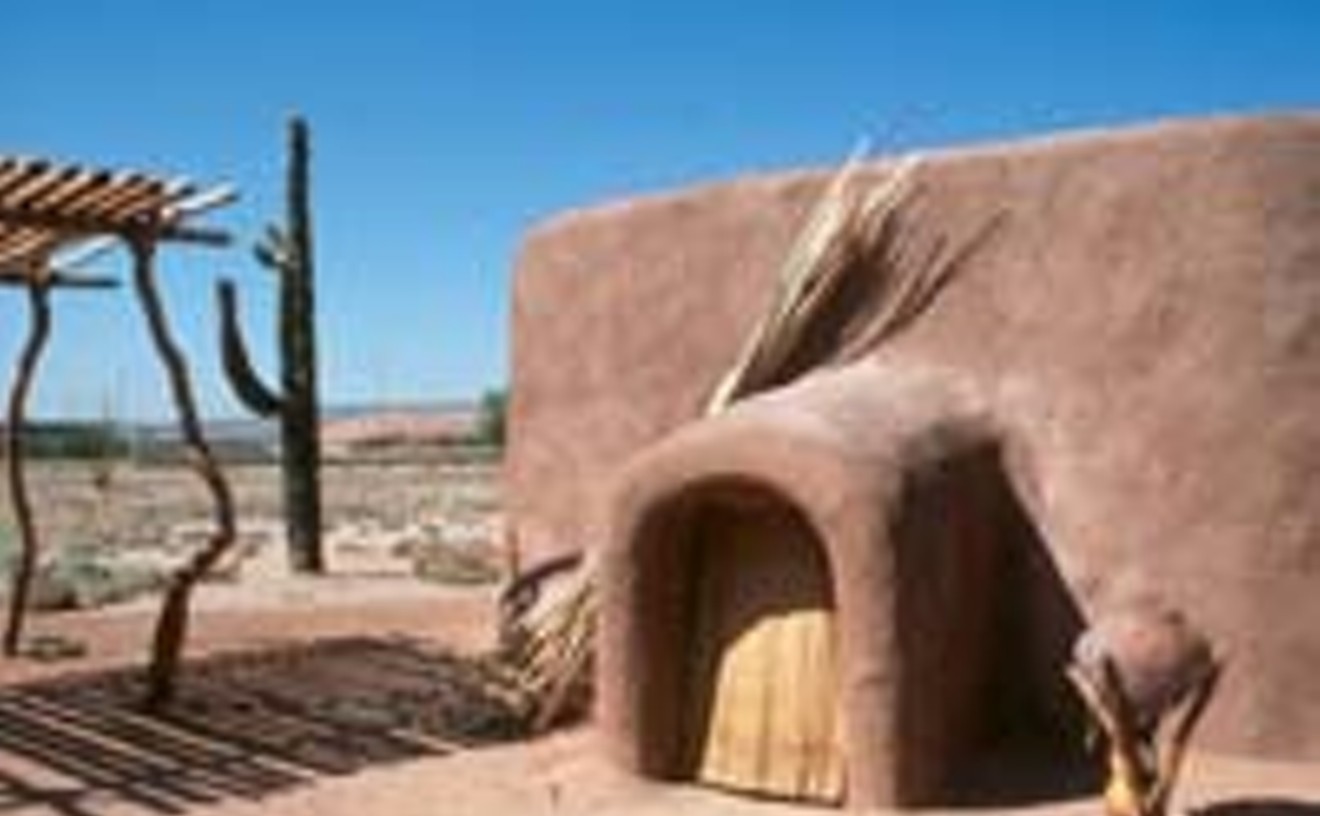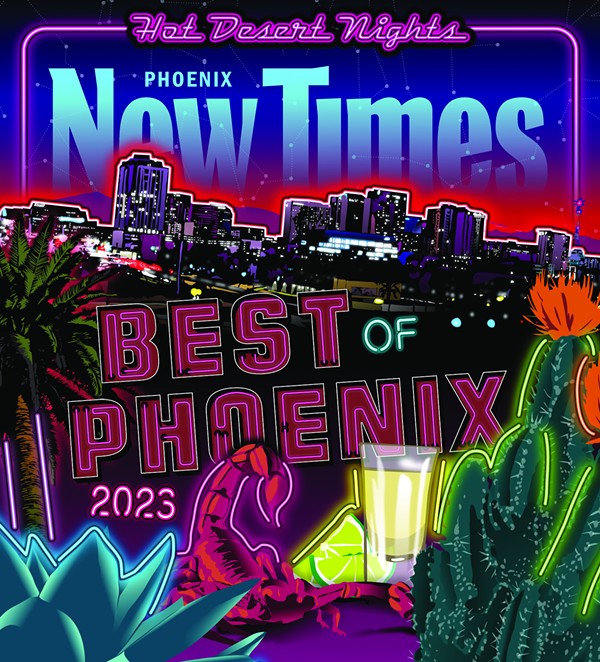The Zone — a stretch of downtown Phoenix along Jefferson Street between Ninth and 13th avenues — has been called one of the largest homeless encampments in the nation. It has also become a battleground pitting local businesses against some 1,000 unsheltered individuals who call the area home. On Aug. 10, 2022, business owners in the Zone filed suit against the city for "completely abdicating its responsibility" to police the area. While the suit continued to make its way through the court system, Phoenix Kitchens, a subsidiary of California-based company Maker Kitchens, took matters into its own hands. Under the guise of a utility work permit, the company installed massive metal dinosaur sculptures along its property line on Ninth Avenue in November 2022. Electric Supply, a company located near Maker Kitchens, also helped fund the installation, though the company was not a part of the Aug. 10 lawsuit. Electric Supply's president, Bill Morlan said he "felt [he] could help keep the area safe and clean" by installing the sculptures as a deterrent for Zone residents to set up camp. The city felt differently, and the sculptures were ordered to be removed.
Best Newsletter
Lookout Phoenix
In a moment when LGBTQ+ Arizonans were facing mounting discrimination and vitriol — in the classroom, out on the streets and in the halls of the Arizona statehouse — Lookout Phoenix arrived, a news organization promising to tell the stories and uplift the voices of Arizona's LGBTQ+ residents. The organization was cofounded by Joseph Jaafari, a former investigative reporter at The Arizona Republic. The small team has managed to get Lookout off the ground and started making plans for its expansion — no small feat, and a rare piece of good news about the news in a crumbling media market, both in Arizona and around the country. An important component of Lookout's work is its weekly (sometimes biweekly) newsletter, which highlights the key stories about LGBTQ+ rights in the state, alongside incisive analysis about the state of Arizona politics. Recent newsletter editions have featured in-depth coverage on the ongoing legal battle around the rights of trans student athletes in Arizona, along with roundups of the most important news of the day. "Fierce. Independent. Queer" is Lookout's slogan, and so far, it has more than lived up to that promise.
Best Instagram
Arizona Highways
If all we did was look at the gorgeous nature photography on Arizona Highways' Instagram, it would still be one of our favorite accounts. But the perenially beloved magazine dedicated to celebrating our state's natural beauty knows how to write an engaging caption as well. Whether we're reading fun facts about Arizona's national parks on the National Park Service's anniversary or getting context about an image with words from its photographer, we often come away from a scrolling session a little more knowledgeable. In that way, Arizona Highways' Instagram account is a feast for the eyes and the mind.
Best TikTok
Camaron Stevenson
Camaron Stevenson, founding editor of Arizona media outlet The Copper Courier, may have started out in print, but he shines on TikTok, where he brings important stories to his 20,000 followers. Whether he's discussing the latest legislative shenanigans at the Arizona State Capitol, visiting a local Target to see where they moved their Pride display or covering issues like the eviction by Grand Canyon University of the mobile home park residents next door, Stevenson explains things clearly, succinctly and without bias. The viewer comes away feeling educated but not condescended to. Stevenson has only been posting TikToks since May, but we hope he's a presence on the app for a long time to come.
The framework of "Rim to River: Looking Into the Heart of Arizona," published by University of Arizona Press, is a north-to-south trek author Tom Zoellner takes across our fair state on the Arizona Trail. Along the way, Zoellner (a former Phoenix New Times contributor) considers the history, culture, politics, food and geography of the state in his typically engaging style. The fifth-generation Arizonan blends affection for his homeland with clear-eyed consideration of its faults, and the result is a must-read book for anyone interested in the Grand Canyon State. Zoellner was the one walking, but he takes the reader along with him for the journey.
Best Art Museum
Scottsdale Museum of Contemporary Art

Of all the ways we could describe what we see at Scottsdale Museum Contemporary Art, the most apt word may be "surprising." Each new exhibition brings work that dazzles and challenges us. This year alone, the museum showed the toll poor air quality takes on the human body through "The Air Around Us," a series of installations around the Valley; and showed the cracks in modern human interaction in "Language in Times of Miscommunication." But we also love the things about SMoCA that don't change, like James Turrell's austerely beautiful Skyspace and a super-cool gift shop. It all adds up to the best art museum in town.
- 7374 E. Second St., Scottsdale, 85251 Map
- 480-874-4666
- www.smoca.org
Best Free Art Museum
ASU Art Museum

A number of the excellent museums around the Valley offer free or pay-what-you-wish admission at certain days and times, and for that we're grateful. But we're deeply appreciative of the fact that any time we want to check out what's new at ASU Art Museum, it costs us exactly zero dollars. The building itself, located at Arizona State University's Tempe campus, is a delight, an angular labyrinth that we love to explore. But the art is always a sight to behold as well. Just this year, we've enjoyed the fascinating "Lucha Libre: Beyond the Arenas," an exhibit examining the history and culture surrounding the sport, and "Everything Is a Little Fuzzy," thought-provoking works about life in a post-pandemic world. That one you can see at the museum through the end of this year.
- 51 E. 10th St., Tempe, 85281 Map
- 480-965-2787
- asuartmuseum.org/
Best Name Change
S'edav Va'aki Museum

For decades, Phoenicians both born here or transplanted were taught that the Indigenous residents of the area just "disappeared" one day. As with much Native history retold by non-Native people, it was bunk. Tribes who live here today have roots reaching back to 1 A.D. This name change is notable because it stems from a long-overdue collaboration between the museum, which opened in 1929, and local Indigenous communities so they could finally tell their own stories. When Pueblo Grande Museum became S'edav Va'aki Museum in March, it was more than a formality. It recognizes the living cultures and homelands of the Native peoples who have been here for centuries and more accurately represents their heritage. "Pueblo Grande" means "large village" in Spanish and reflects a language with no connection to the people. S'edav Va'aki, pronounced "suh-UH-dahf VAH-ah-kee," is an O'odham name for the large central (S'edav) platform mound (Va'aki) that was the ceremonial house of a village in the Salt River Valley. Visitors can see the preserved mound just outside of the museum, which is undergoing a major overhaul of signage and exhibits to add context to the true history of the region's Indigenous people.
- 4619 E. Washington St., Phoenix, 85034 Map
- 602-495-0901
- www.phoenix.gov/parks/arts-culture-history/sedav-vaaki
Best Art Gallery
Lisa Sette Gallery

Many art galleries in metro Phoenix cluster together in certain geographic areas: Roosevelt Row, Old Town Scottsdale, Grand Avenue. And then there's Lisa Sette Gallery, which stands alone not only on a map but also in reputation. Sette's gallery, which is rapidly approaching its 40th anniversary, has moved around the Valley before settling in its current location near Third Street and Thomas Road. What hasn't shifted is the gallery's stellar offerings from top artists in Phoenix and beyond. A favorite show this year was "Dark Garden" featuring mixed-media work by local artist Mayme Kratz. The gorgeous, moody pieces celebrate the harsh beauty of the desert. We celebrate Lisa Sette Gallery for consistently showing some of the best work in Phoenix.
- 210 E. Catalina Dr., Phoenix, 85012 Map
- 480-990-7342
- www.lisasettegallery.com
Best New Art Space
Studio Gennaro Garcia
If you dig the look of Taco Chelo, Barrio Queen and Ghost Ranch, visit this new studio in the heart of the Grand Avenue arts district where the artist responsible for those vibes, Gennaro Garcia, creates a range of distinctly Mexican-inspired works. He churns out everything from highly collectible paintings, prints, sculptures, wood carvings and Talavera pottery to more affordable T-shirts, stickers and tote bags. Garcia's favorite subjects include women (particularly Frida Kahlo), skulls and food, and, as an avid cook himself, he plans to use the space to host intimate dinners co-created with various chef friends. Maybe he'll even serve wine from a collaboration he's doing with a producer out of Valle de Guadalupe — he plans to launch the vino this year and considers it yet another art form. The studio is open by appointment and on some First Fridays; check his Instagram page to keep up.
- 1114 Grand Ave., Phoenix, 85007 Map
- 480-383-3259
- www.artegennaro.com/





